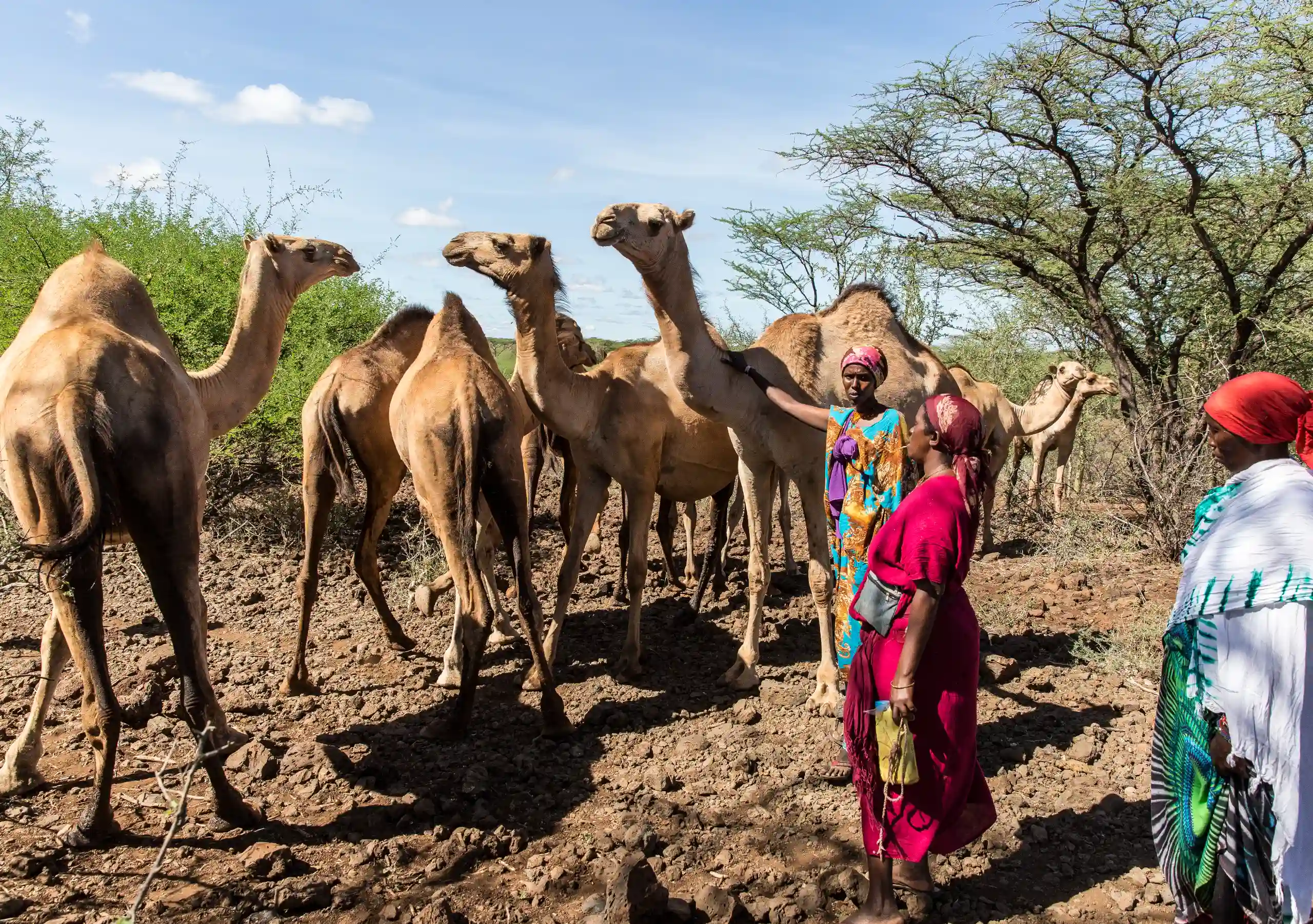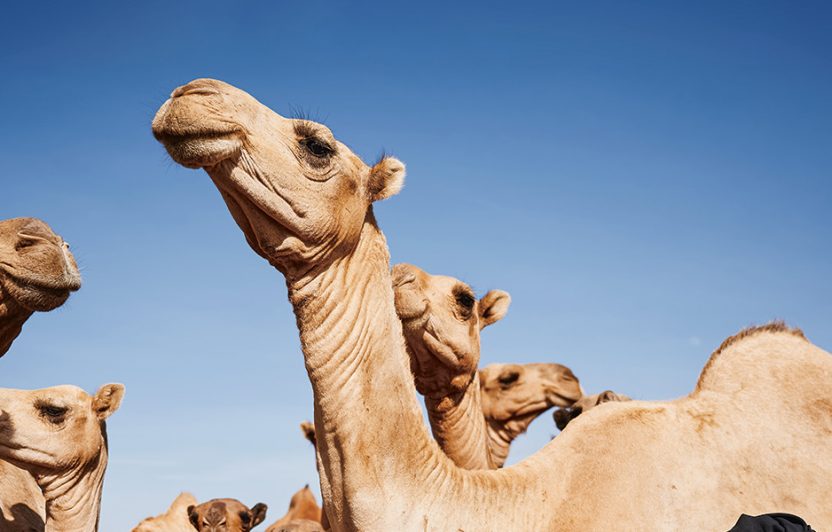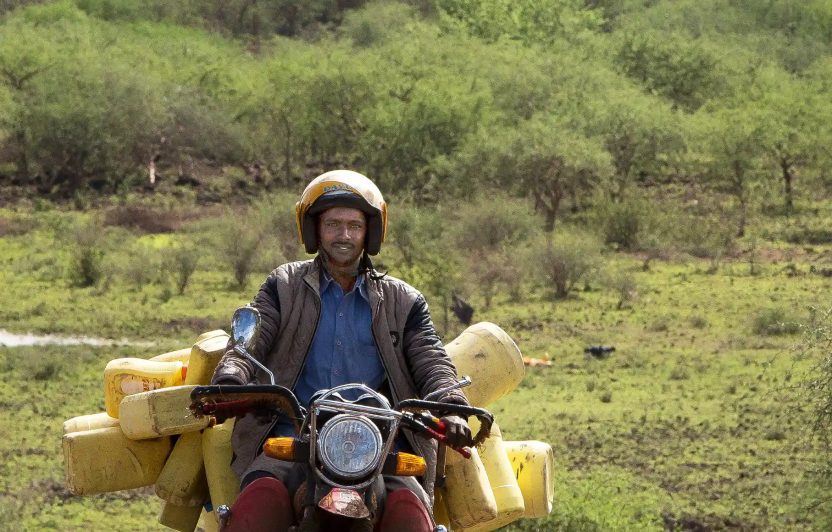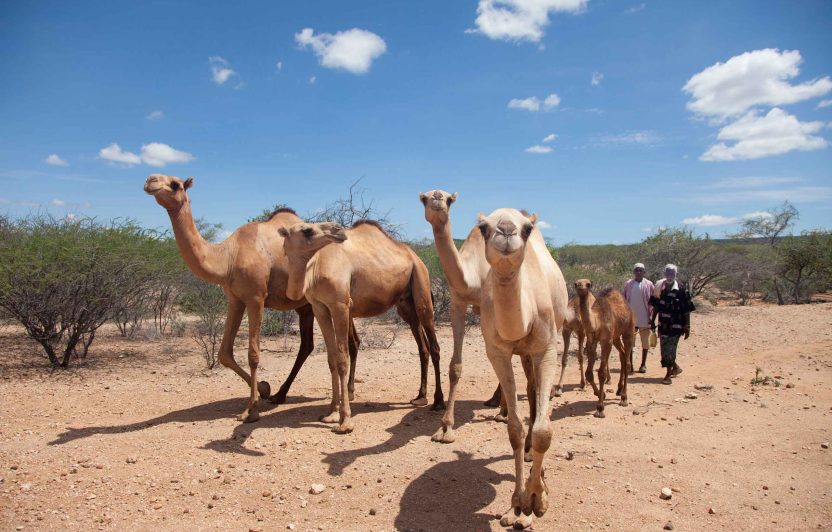
The dirt road north of Mount Kenya runs for 650 kilometres from Isiolo to the Somalian border and at the beginning of May, herders and their animals travel the route heading for the south west. They are fleeing the drought and looking for grass as the rains have once again failed. According to the Food and Agriculture Organisation (FAO), the Horn of Africa has been affected by drought almost every year since the start of the new Millennium. Kenya itself escaped the extreme drought until 2014/15. The cause that year was the “El Niño” weather phenomenon. Around Isiolo, where at least there has been some rain, livestock herders from different tribes are all competing for scarce animal feed, making for a tense situation.
Little but stones
Some 70 kilometres east of Isiolo is the village of Kula Mawe. Roughly translated this means “eat the stones”. An appropriate name as there is little else to eat. The land is hot and dry and the lives of the Borana, a tribe of herders is hard. “I used to have about 110 goats but now I only have 20,” explains 64-year old Abdy Guyo. Like most people in Kula Mawe he is reliant on food aid. The situation for his oldest daughter Amina and her family is no better, particularly as her husband is paralysed in one leg and cannot work. Despite that, they have grounds for hope. In April 2016, each was given a female camel. They and a further 16 women and men had been selected by their community to take part in a demonstration project run by Biovision and Vétérinaires Sans Frontières Suisse (VSF). When the camels calve, each owner will have 3-7 litres of milk every day – a healthy and an important addition to their diet. By selling the surplus milk they can also earn about 100 Kenyan Shillings (about 90 Swiss centimes) per litre. “Camels are much better at coping with drought than cattle and smaller domestic animals. They also continue to provide milk during dry spells,” says Abdy Guyo with pleasure.
Learning from mistakes
“A few years ago, the plan had been to give the camels to the poorest members of the community,” reports Muktar Ibrahim, the VSF Project Officer in Isiolo. We found however, that they could not even afford the required veterinary care or pay the herders. “We have learned from our mistake and now provide camels to those with at least some income,” explains Muktar.
There are also other challenges to overcome. At present, only five of the camels in Kula Mawe are in calf and the shortage of fodder is making it more difficult to rear the camels.
Kula Mawe is one of 4 locations, where a total of 50 dromedaries (camels with one hump) funded by Biovision are being provided. Thanks to the project, the herders discover the benefits of camels, particularly during periods of drought. Benjamin Losusui, an experienced herder in the project hopes that others will copy. “Camels are the future,” he says with conviction.




